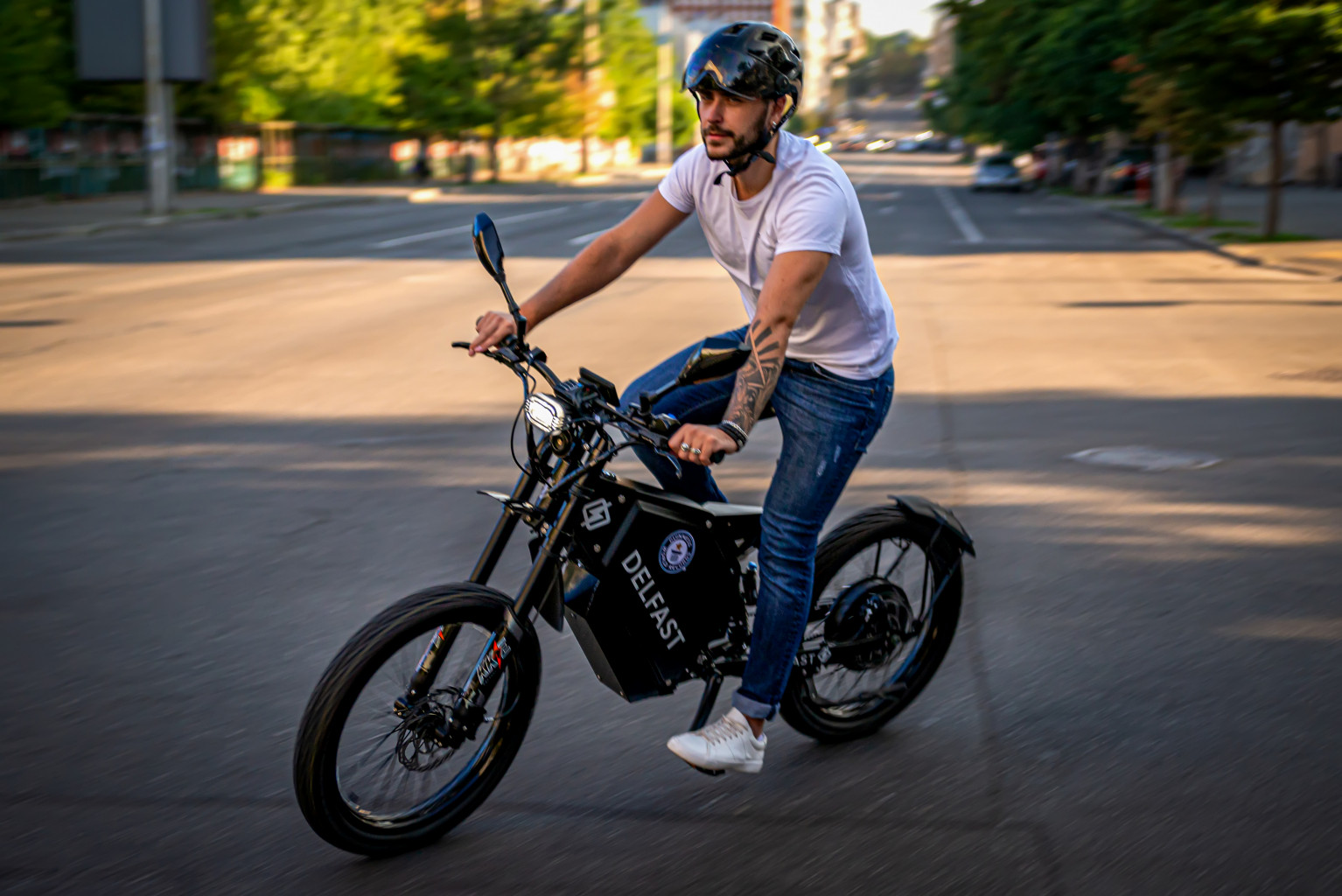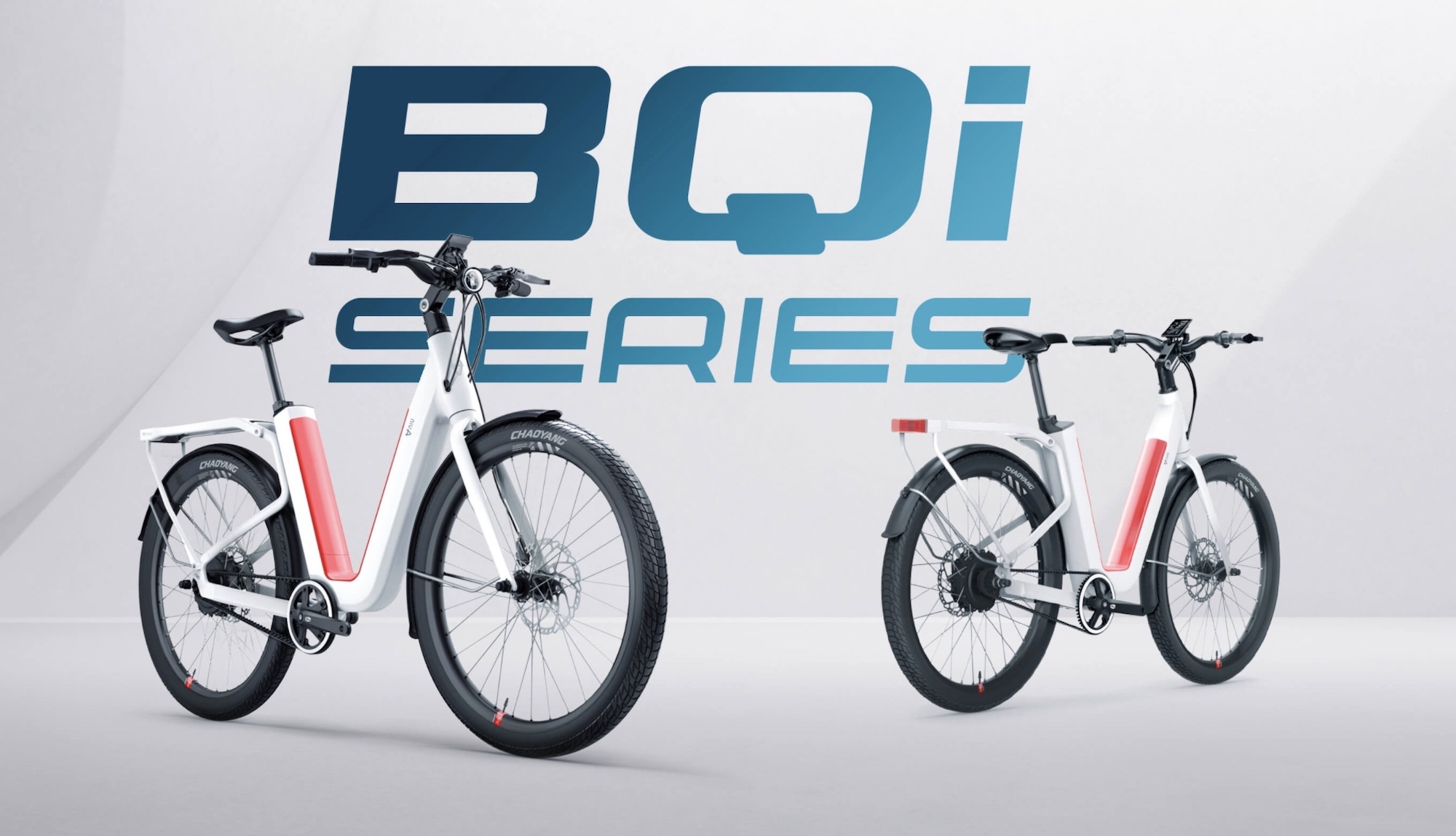Even though we didn’t make it to CES 2022 in person this year, we certainly heard about the “eMobility Experience,” a test track for demo rides of all the e-scooters, e-bikes and whatever other micromobility vehicles came to play in Las Vegas.
A lot of products were shown, many of which weren’t actually new, like Bird’s new consumer suite of vehicles (the Bird Bike, Bird Flex and Birdie), Zoomo’s utility electric-assist bikes, Euphree’s City Robin step-through e-bike and Arevo and Superstrata’s 3D-printed carbon fiber e-bikes. There were a handful of interesting companies showing off new versions of their electric scooters, bikes, motorcycles and connected tech.
The main theme throughout this year is smart, connected vehicles. These little EVs are being built with more powerful onboard computers that are synced up to apps that can help riders do things like find their vehicle, track fitness goals and control bike functions like locks and lights.
Here’s a roundup of new bikes, scooters and some connected tech that came to CES 2022.
Segway

Image Credits: Segway-Ninebot
Segway, the electric micromobility manufacturer that not only sells personal vehicles but also supplies a number of the world’s shared operators with vehicles, came to CES with a new kick scooter line, the P-Series, and a new moped-type e-scooter, the E11a.
The P60 and P100S scooters have wider footboards and handles, automobile-grade all-season tires, and front- and rear-spring suspension. They’ve also got turn signaling, a tail light and multiple ways to lock and unlock the vehicle. The E110a has room for two, plenty of storage space and lots of smart features, according to the company. Segway didn’t share more info on what exactly those smart features were, but if it’s anything like its last generation, it’ll have a battery management system and the ability to connect to smartphones and thus the Segway-Ninebot app.
Cake
The Swedish maker of lightweight electric motorbikes brought its “CAKE :work series” to the U.S. for the first time. This series of professional motorbikes have been shown before, just not in the states. The bigger Cake news during CES involved updates to its Ridecake connectivity app, including features to allow professional fleet managers to monitor and manage their vehicles.
The new connectivity features are available to all riders with a data service-enabled Cake Connect module on their vehicles; this includes all current and upcoming models, as well as a majority of the existing Cake bikes. The update to the app will add customized ride modes, real-time riding information, ride history and anti-theft security.
Professionals using Cake’s cloud-based management system will get real-time data, including live location of their fleet with position of all bikes, mileage, range and battery status for all bikes, and access to diagnostic data. Over the air, the system will also allow for firmware updates, access to anti-theft functionality and setting custom ride modes.
Delfast

Image Credits: Delfast
American-Ukrainian startup Delfast rolled out an upgraded model of its electric Top 3.0 bike, which the company claims can go up to 200 miles on a single charge. The smart bike has an onboard computer that can be set to receive software updates and immobilize the vehicle for theft-protection. It also can sync with Delfast’s new mobile app to provide on-demand analytics, lock and unlock the bike, arm and disarm the bike alarm, track total mileage, odometer and speedometer metrics, monitor the bike power and estimate range, locate the bike, control lighting and other smart features.
Niu
Chinese e-scooter company Niu showed up this year with its new BQi-C1 e-bike, a vehicle the company has already teased but finally shared pricing and tech specs at CES.
The step-through bike is powered by a 500W continuous and 750W Bafang hub motor in the rear and can reach top speeds of 28 miles per hour in the U.S. Stricter e-bike regulations in Europe mean that those versions will have just a 250W motor and a top speed of 15.5 miles per hour. The U.S. version will have both a throttle and a pedal assist, while the European version just has pedal assist. The BQi will also be app-connected and feature many smart security features. It’ll be priced at $1,499 in the U.S., which is a pretty good deal for such a powerful e-bike.
Okai
[gallery ids="2254901,2254896,2254899,2254897,2254898,2254900"]
Okai, another Chinese manufacturer that supplies vehicles to many big-name shared operators, came to CES with five products, but only one of three can be ridden. Let’s start there. The EB20 e-bike is made from professional-grade mountain bike components with a lightweight carbon fiber frame. It’s a 12-speed bike with a 750W motor, swappable Samsung batteries and a large 2.8-inch LED touchscreen.
Okai also launched its ES600 sharing e-scooter to address the needs of the growing scooter-share industry. It features a swappable battery system with built-in handles on each battery, optimized weight distribution, a low center of gravity and a hydraulic suspension system. It also has side and front light indicators, LED headlights and taillights and side-mounted reflectors. The ES800 is an off-road performance scooter with a serious 1800W motor, 12-inch off-road tires, a 35% incline climb rate and dual shock absorbers. The weight of this heavy-duty vehicle is 30% heavier than most e-scooters to provide more stability.
Now, onto the products you can’t ride. Okai unveiled its SH10 smart helmet, made with antibacterial materials, to make for a safer and more hygienic commute. These are likely also geared toward the shared audience that are increasingly being required by cities to include helmets.
The helmet is integrated with Bluetooth to connect to the Okai app, from which riders can customize and configure front and rear LED displays to improve visibility. A smart integrated speaker also allows riders to listen to music without affecting aural awareness on the road.
Finally, Okai came to Vegas with its SP10 Smart Backpack that features an ultraviolet light disinfection chamber, a fingerprint sensor for secure access, integrated device charging and a customizable RGB strip that can be synced with the vehicle status.
Bosch
Bosch showed up with its connected smart e-bike system, which isn’t exactly new, but it was awarded honoree status at the CES Innovation Awards.
The system consists of the eBike Flow app that acts as a key, a control unit, display, rechargeable battery and drive unit. Like others at CES, the connected bike can be updated over-the-air, record personal ride info and fitness data, customize riding modes and display information like battery charge status and next service appointment on the home screen.
Moonbikes
Finally, just to keep things interesting, there was Moonbikes. Now, again, the company’s electric snow vehicle is not exactly new, but CES was really the first time people really got to check it out in person. It’s a single-track snowmobile that has a 3 kW (4hp) electric motor and reaches a 26 mile-per-hour top speed.
At only 182 pounds, it’s much lighter than your traditional snowmobile, which might make it easier to maneuver and play around on. It’s designed with a snow track on the rear and a single ski in front, and its battery can go about 12 miles in sport mode or 22 miles in eco mode. A full charge would take about five hours.



















 English (US) ·
English (US) ·